Boise Water Quality at a Glance
some concerns
Is Boise Water Safe to Drink?
Generally Yes – Boise’s water meets federal standards and PFAS levels are below new EPA limits of 4 parts per trillion. However, third-party testing has found concerning levels of arsenic, hexavalent chromium, and other contaminants above health guidelines. Water comes from 70% groundwater wells and 30% Boise River treatment plants.
⚠️ Key Concerns for Boise Residents
- Arsenic: Third-party testing found levels exceeding health guidelines, naturally occurring in Idaho groundwater
- Hexavalent Chromium: Cancer-causing chromium-6 detected above health guidelines in water supply
- PFAS Presence: While below EPA limits, PFAS detected in some Treasure Valley systems including Veolia
- Disinfection Byproducts: Total trihalomethanes (TTHMs) from chlorine treatment above health guidelines
Read the full report below for detailed analysis, specific contaminant data, and actionable recommendations for Boise residents.
Boise – Idaho – Water Quality Report 2025: PFAS Testing, Infrastructure Concerns & Safety across your city
Veolia Water Idaho (formerly SUEZ) provides comprehensive water services to approximately 250,000 residents across the Boise metropolitan area, including portions of Eagle and Meridian. As Idaho’s largest water utility, the system operates 83 active wells ranging from 200 to 1,100 feet deep, along with two advanced water treatment plants that deliver an average of 23 million gallons of drinking water daily in winter, expanding to 97 million gallons daily during peak summer demand.
Boise sources its drinking water from two primary sources: approximately 70% comes from the Treasure Valley aquifer system through deep groundwater wells, while the remaining 30% is drawn from the Boise River and treated at the Marden and Columbia Water Treatment Plants. The groundwater originates from snowmelt that travels through mountain watersheds and filters naturally underground for years before reaching the wells. While Veolia’s water meets federal standards, third-party testing has identified concerning levels of arsenic, hexavalent chromium, and other contaminants above health guidelines. The utility has implemented significant investments in membrane filtration technology, corrosion control, and water quality monitoring to ensure sustainable water supply for Idaho’s capital region.
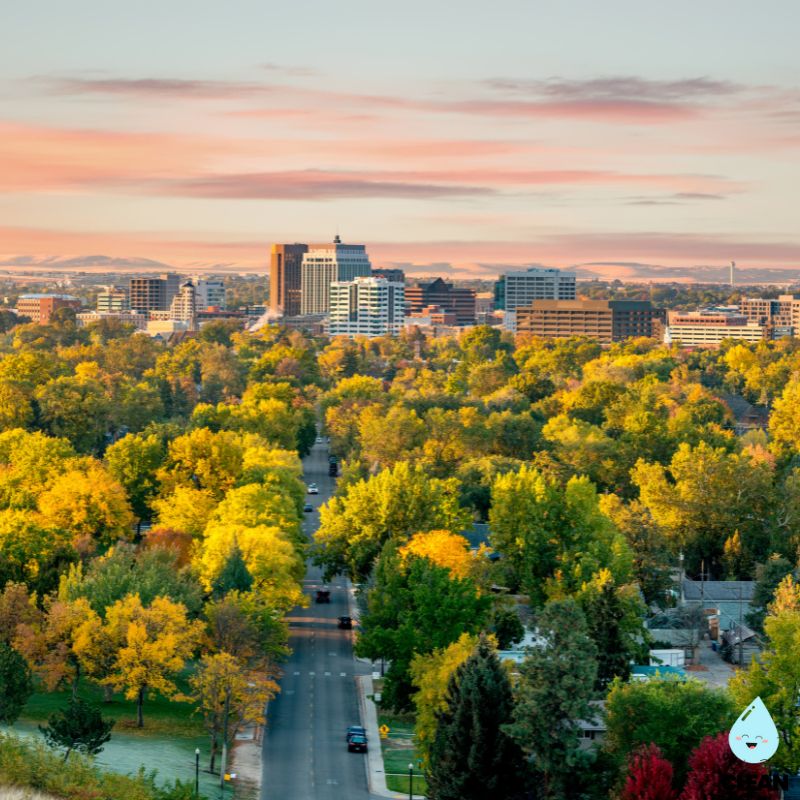
Boise Water Quality: Current Status (2024-2025)
Latest Testing Results
- EPA Compliance Status: For the latest quarter assessed by the U.S. EPA (April 2024 – June 2024), Veolia Water Idaho was in full compliance with federal health-based drinking water standards for all regulated contaminants.
- Third-Party Testing Concerns: Independent analysis found Boise water exceeds health guidelines for arsenic, hexavalent chromium, manganese, radiological contaminants, tetrachloroethylene, and total trihalomethanes – though still within federal regulatory limits.
- PFAS Detection: Low levels of PFAS detected in Treasure Valley systems during voluntary testing (2021-2024), though below EPA’s new 4 parts per trillion standard for most systems including Veolia.
- Testing Scope: Veolia conducts comprehensive water quality monitoring across all 83 wells and treatment facilities, with regular testing for over 80 different contaminants to ensure regulatory compliance and water safety.
Water Sources
- Deep Groundwater Wells: Primary source (approximately 70% of supply) from 83 active wells ranging from 200-1,100 feet deep, drawing from the Treasure Valley aquifer system fed by mountain snowmelt.
- Boise River Surface Water: Secondary source (approximately 30% of supply) with water rights to Lucky Peak Reservoir releases, providing system redundancy and additional capacity during peak demand periods.
- Source Water Protection: Natural filtration through underground basalt formations and comprehensive watershed protection measures help maintain source water quality before treatment.
Advanced Treatment Technology
- Marden Water Treatment Plant: Direct filtration facility utilizing dual-media filtration to remove particulate matter, with pH adjustment to reduce water corrosivity and optimize distribution system performance.
- Columbia Water Treatment Plant: State-of-the-art membrane facility using ultrafiltration technology that requires no pre-treatment, recently upgraded with new membrane systems to increase capacity and improve efficiency.
- Groundwater Treatment: Well water treated with chlorine disinfection for microorganism control, with polyphosphate addition at nine wells to sequester iron and manganese for improved water clarity.
Infrastructure Modernization
- Columbia Plant Upgrade: Recently completed $8.6 million membrane system upgrade (2022-2024) that expanded production capacity while maintaining the facility’s current footprint, earning an Excellence in Engineering Award.
- Distribution System Improvements: Ongoing infrastructure replacement and expansion to serve the Treasure Valley’s rapidly growing population, with smart monitoring systems for leak detection and pressure management.
- Sustainability Initiatives: Veolia has committed to carbon neutrality by 2050, exploring renewable energy options including on-site hydropower, solar panels, and geothermal heating systems.
Customer Protection Initiatives
Veolia Water Idaho provides extensive customer support through transparent water quality reporting, 24/7 customer service, and proactive communication about water quality issues. The utility works closely with the Idaho Department of Environmental Quality to monitor emerging contaminants and implement necessary treatment upgrades. Educational outreach helps residents understand water conservation practices, system operations, and the value of professional water management in Idaho’s high desert environment. Despite meeting federal standards, residents concerned about specific contaminants like arsenic and hexavalent chromium should consider point-of-use filtration systems for additional protection.
Recommendations for Boise Residents
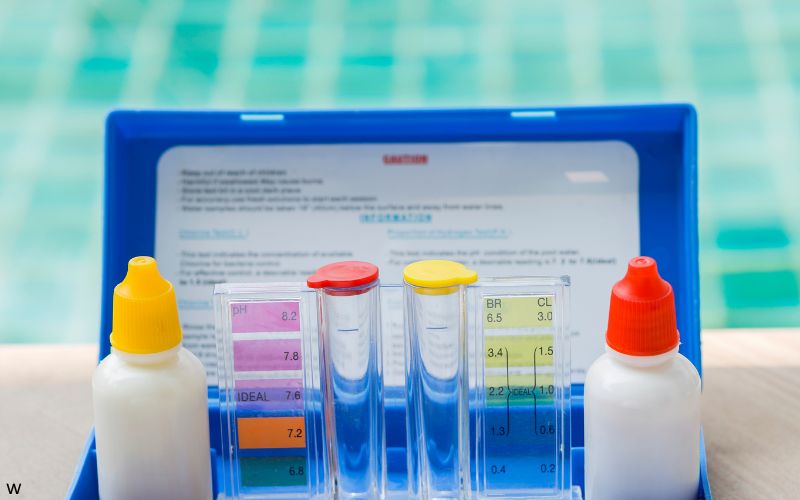
Test Your Water
Contact Veolia Water Idaho customer service at (208) 343-5421 for information about water testing options. Independent testing is especially recommended for homes with private wells or specific concerns about arsenic, chromium-6, or PFAS contamination.
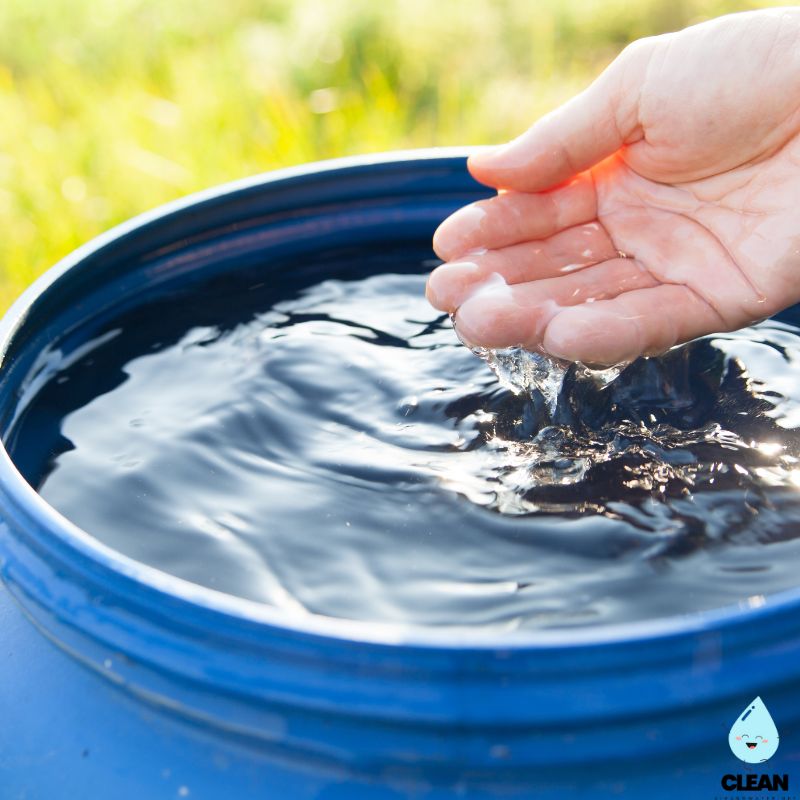
Conserve Water
Practice water conservation to help manage peak summer demand that can reach 97 million gallons daily. Consider drought-resistant landscaping and efficient irrigation systems, especially since many neighborhoods rely on expensive treated water rather than canal irrigation.

Consider Filtration for Key Contaminants
While Boise’s water meets federal standards, third-party testing found concerning levels of arsenic, hexavalent chromium, and disinfection byproducts. Consider NSF-certified reverse osmosis or activated carbon filters (NSF/ANSI Standard 58) for drinking water if you have health concerns about these contaminants.
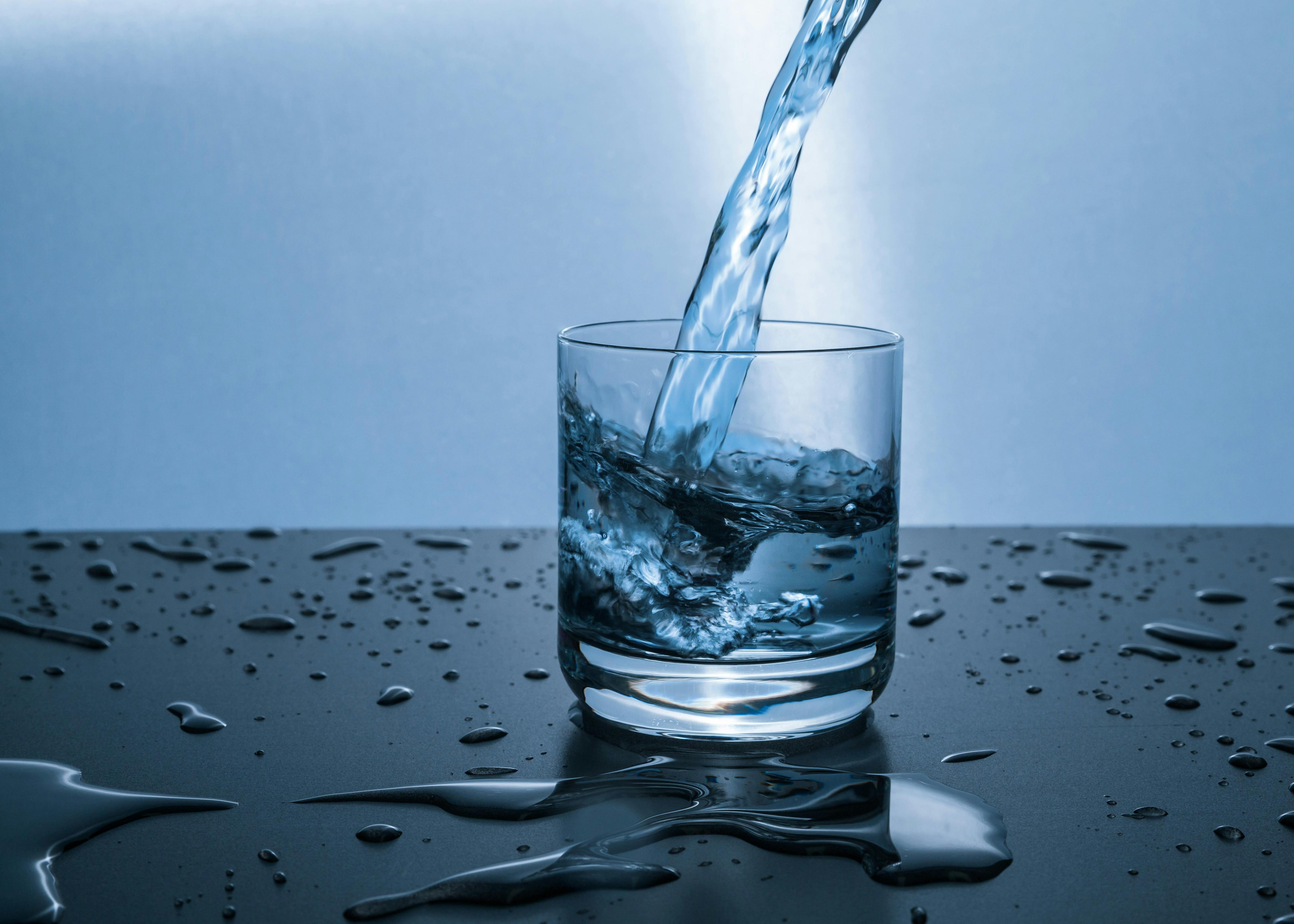
Understand Your Water Bill
Veolia’s rates are regulated by the Idaho Public Utilities Commission. During summer months, demand can quadruple due to lawn watering and pool filling. Consider connecting to pressurized irrigation systems where available for significant cost savings on outdoor water use.

Report Issues
Contact Veolia Water Idaho Customer Service at (208) 343-5421 for water pressure problems, quality concerns, or service issues. Use their online portal at mywater.veolia.us for account management, bill payments, and service notifications.
Frequently Asked Questions
Is Boise’s tap water safe to drink?
Boise’s tap water meets all federal and state drinking water standards and is generally safe to drink. However, third-party independent testing has found concerning levels of several contaminants above health guidelines, including arsenic, hexavalent chromium, and disinfection byproducts.
The water undergoes comprehensive treatment at two advanced facilities – the Marden Plant uses dual-media filtration while the Columbia Plant employs state-of-the-art membrane ultrafiltration technology. Groundwater from 83 deep wells is treated with chlorine disinfection, and polyphosphate is added at nine locations to prevent iron and manganese from affecting water clarity. While regulatory compliance is maintained, residents with health concerns may want to consider additional filtration for drinking water.
Why does my water bill increase so much in summer?
Boise’s water demand can quadruple during summer months, increasing from 23 million gallons daily in winter to 97 million gallons daily during peak season:
1. Lawn watering: Many newer subdivisions lack access to cheaper pressurized irrigation systems and must use treated drinking water for landscaping
2. Pool filling and increased outdoor water use during Idaho’s hot, dry summers
3. Tiered rate structure: Higher usage results in higher per-gallon rates
Consider connecting to pressurized irrigation systems where available, or implementing drought-resistant landscaping to reduce summer water costs. Veolia’s rates are regulated by the Idaho Public Utilities Commission to ensure fair pricing.
What about PFAS and other emerging contaminants?
Treasure Valley water systems, including Veolia, have detected low levels of PFAS during voluntary testing conducted from 2021-2024:
• Current status: Most detected levels are below EPA’s new drinking water standards of 4 parts per trillion for PFOA and PFOS, though Capitol Water Corporation (a smaller Boise system) was found to exceed these new limits
• Monitoring: Idaho Department of Environmental Quality coordinates voluntary PFAS testing across the state with federal grant funding
• Treatment planning: Water utilities are evaluating treatment options including activated carbon and reverse osmosis as regulations are finalized
• Sources: PFAS contamination in the Treasure Valley is linked to military bases (Mountain Home Air Force Base, Gowen Field) and industrial activities
Residents concerned about PFAS exposure can install NSF-certified point-of-use filtration systems for additional protection.
Does Boise have hard water?
Yes, Boise has moderately hard water due to natural mineral content from groundwater sources:
Mineral Content:
• Calcium and magnesium from natural underground filtration through basalt rock formations
• Iron and manganese present in some wells, controlled through polyphosphate treatment at nine well locations
• pH adjustment at treatment plants helps reduce water corrosivity
Effects and Solutions:
• Hard water can cause mineral buildup in appliances and plumbing fixtures
• Water softening systems can be installed for homes experiencing significant hard water issues
• The mineral content is not harmful to health and many people prefer the taste of naturally mineralized water
Quality News About Your Water
Get the comprehensive water quality news coverage you need with our dedicated US Water News Service. From coast to coast, we deliver in-depth reporting and expert analysis on PFAS contamination, EPA regulatory changes, infrastructure developments, and emerging water safety issues affecting communities nationwide. While mainstream media only covers the biggest stories, we provide the detailed, ongoing coverage that helps you understand the full scope of America’s water challenges. Whether you’re a concerned citizen, water professional, or community leader, our daily updates and analytical insights keep you informed about the issues that matter most to public health and environmental safety.
Contaminants of Concern

PFAS Compounds
Source: Per- and polyfluoroalkyl substances detected in Treasure Valley water systems, primarily linked to military installations (Mountain Home Air Force Base, Gowen Field) and industrial activities
Health Effects: Research suggests potential concerns including impacts on immune system, fertility, cholesterol levels, and possible links to certain cancers; particularly concerning for pregnant women and developing children
Current Status: Most Treasure Valley systems including Veolia test below EPA’s new 4 ppt standard; Capitol Water Corporation exceeded limits and is working with Idaho DEQ on remediation EPA Limits: New EPA regulations set maximum contaminant levels at 4 ppt for PFOA and PFOS, 10 ppt for PFNA, PFHxS, and GenX chemicals
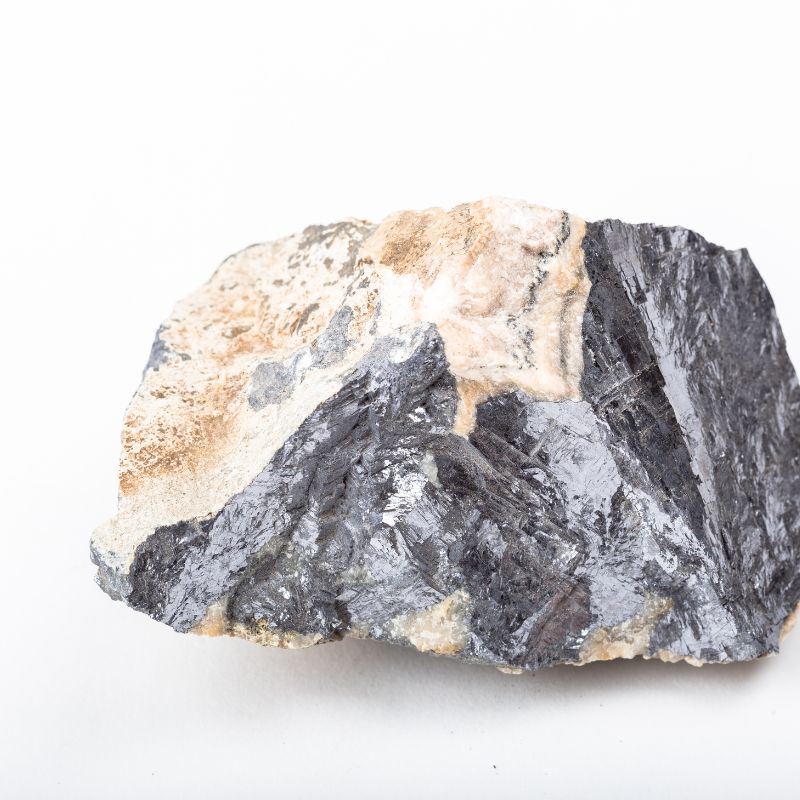
Naturally Occurring Minerals & Other Contaminants
Source: Arsenic, manganese, and hexavalent chromium naturally present in Idaho’s geological formations; disinfection byproducts from chlorine treatment processes
Health Effects: Arsenic and hexavalent chromium are known carcinogens; manganese at elevated levels may affect children’s cognitive development; disinfection byproducts linked to cancer risk
Current Levels: Third-party testing found concerning levels of arsenic, hexavalent chromium, and total trihalomethanes above health guidelines in Boise area systems; polyphosphate treatment used at nine Veolia wells to control iron and manganese EPA Limits: 10 ppb for arsenic; 100 ppb for hexavalent chromium; 80 ppb for total trihalomethanes
Please read – our information
The information presented on cleanairandwater.net is compiled from official water quality reports, trusted news sources, government websites, and public health resources. While we strive for accuracy and thoroughness in our presentations, we are not scientists, engineers, or qualified water quality professionals.
Our mission is to present water quality information in an accessible, real-world format that helps people understand what’s in their water and make informed decisions about their health and safety. We believe that complex environmental information should be available to everyone in a format that’s easy to understand.
We make every effort to ensure our content is current and accurate, but we cannot guarantee that all information is complete or error-free. This website should not replace official communications from your local water utility or health department. We always recommend consulting official sources for the most up-to-date information regarding your specific water system.
Clean Air and Water is not liable for any unintentional errors, omissions, or outdated information. The content on this site is provided for informational purposes only and should not be considered professional advice.


